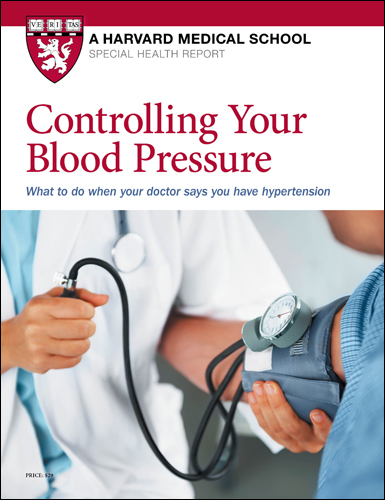Heart Health
Can you have a heart attack and not know it?
"Silent" heart attacks that don't produce noteworthy symptoms put you at the same future risks as the classic ones.
 When you think of a heart attack, you probably picture a pretty dramatic event that includes someone experiencing intense chest pain, clutching their arm and dropping to the ground unconscious.
When you think of a heart attack, you probably picture a pretty dramatic event that includes someone experiencing intense chest pain, clutching their arm and dropping to the ground unconscious.
But in real life today, heart attacks aren't usually that extreme. Some produce no symptoms, or only produce mild symptoms that are so unremarkable that people mistake them for something else — heartburn from a lunchtime burrito, fatigue, or a chest muscle strain.
"The true incidence of silent heart attacks is not known, since by definition they go unnoticed," says Dr. Michelle O'Donoghue, a senior investigator with the TIMI Study Group, an academic research group studying cardiovascular disease at Harvard-affiliated Brigham and Women's Hospital. "However, estimates have placed them anywhere from 20% to 60% of all heart attacks." Both women and men are at risk, she says.
Identifying a silent heart attack
People often don't learn that they had a heart attack until they have an electrocardiogram (ECG) or a stress test and the doctor notices signs consistent with heart damage. As in traditional symptomatic heart attacks, a silent heart attack involves a blockage of blood flow to the heart. This injures and scars part of the heart muscle, leaving behind telltale signs.
Unfortunately, while a heart attack may go unnoticed, the injury it causes is real and puts you at higher risk for heart failure or a future heart attack.
Take action after a silent heart attack
If you do find out that you've had a silent heart attack, you should take steps to prevent or control cardiovascular risk factors, such as high blood pressure, high cholesterol, or diabetes, any of which can make another heart attack more likely.
Doctors don't completely understand why some people experience no symptoms — or only mild or unusual ones — during a heart attack, Dr. O'Donoghue says. To better identify silent heart attacks, she says, there needs to be more education about less common symptoms, which are often very different from the ones most people picture.
"I think the greatest misconception about a heart attack is that the chest discomfort is 'painful' — in fact, most patients describe the chest discomfort as a heaviness or squeezing sensation that can be quite mild in nature," she says. "Women may also experience more atypical symptoms, like shortness of breath, nausea, sweating, and tingling in the left arm or jaw."
If you do experience these symptoms, it's best to get them checked out immediately. Even if they don't turn out to be heart-related, it truly is better to be safe than sorry.
Be heart smart!Take these steps to head off cardiovascular disease: Talk to your doctor about risk factors. Identify things in your health history that might put you at higher risk for a heart attack, such as high blood pressure, high cholesterol, a family history of heart disease, and diabetes. Don't forget to mention female-specific risk factors, such as a history of early menopause (before age 40) or a past episode of preeclampsia (a potentially life-threatening pregnancy complication marked by high blood pressure and protein in the urine). Review your risk factors with your doctor. Know that your risk for heart problems may rise after menopause or if your health changes. Get screened. Monitor your blood pressure, and consider getting tested for diabetes if you have risk factors, such as a family history of the disease, overweight or obesity, or gestational diabetes during pregnancy. Adopt a healthy lifestyle. Eat a heart-healthy diet, meaning one that is high in fruits and vegetables, whole grains, and healthy fats, and low in processed foods, saturated fat, and sugar. It's also important to get regular exercise, as well as adequate high-quality sleep. You should also work to reduce your stress levels. |
Managing risk factors
"Since heart attack symptoms can be missed, it is important to continue regular follow-up with your primary care provider," says Dr. O'Donoghue. She or he might want to order periodic ECGs, she says. "If a silent heart attack is identified, this may lead to more testing and appropriate treatments to help ensure another one doesn't occur and that the heart muscle is protected," says Dr. O'Donoghue.
Being proactive can also help ensure that your heart is healthy and that any risk factors you have for cardiovascular disease are managed appropriately.
Lifestyle changes, including diet improvements, smoking cessation, and exercise, can help protect you from additional heart problems, says Dr. O'Donoghue, even if you've already had a silent heart attack.
Image: © dragana991/Getty Images
About the Author

Kelly Bilodeau, Former Executive Editor, Harvard Women's Health Watch
Disclaimer:
As a service to our readers, Harvard Health Publishing provides access to our library of archived content. Please note the date of last review or update on all articles.
No content on this site, regardless of date, should ever be used as a substitute for direct medical advice from your doctor or other qualified clinician.
















